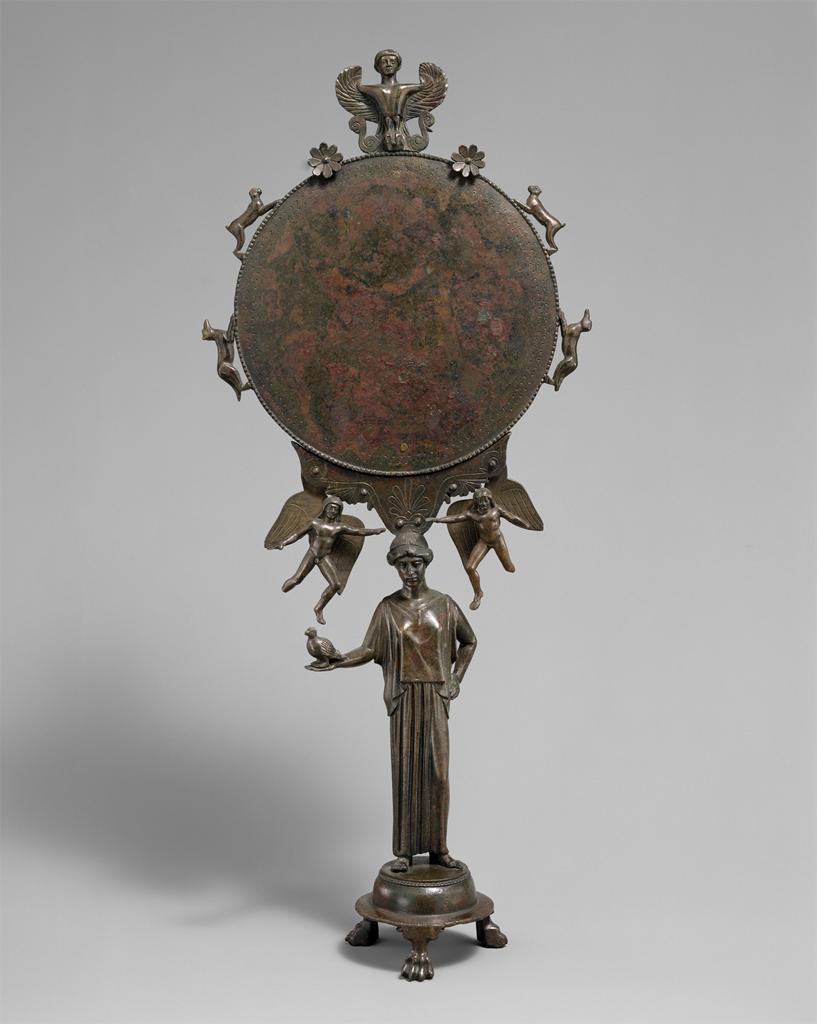Home » Events » HART Professors Present Papers at CAA Annual Conference February 3-6
HART Professors Present Papers at CAA Annual Conference February 3-6
Posted by vrcvanderbilt on Wednesday, February 3, 2016 in Events, HART, Lectures, VRC.
Professors Mireille Lee, Barbara Tsakirgis, and Riyaz Latif travel to Washington, DC this week to present papers at the College Art Association annual conference held February 3-6. The conference consists of four days of presentations, panel discussions, workshops, special events, and exhibitions exploring the study, practice, and history of art and visual culture.
 Lee, Assistant Professor of History of Art and Classical Studies, will address “Mirrors as Instruments of Sexual and Social Transformation” at a session entitled “The Ancient Art of Transformation.” Although we generally think of mirrors as tools for the transformation of personal appearance, ancient Greek mirrors were essential for female sexual maturation and social status. Absent from the iconography of young girls in sculpture and vase painting, mirrors are common on wedding vases in scenes of the preparations of the bride. Lee suggests that bridal scenes “in which the bride gazes into a mirror but does not groom herself should be read as revelatory events in which the bride has a vision of her future husband.”
Lee, Assistant Professor of History of Art and Classical Studies, will address “Mirrors as Instruments of Sexual and Social Transformation” at a session entitled “The Ancient Art of Transformation.” Although we generally think of mirrors as tools for the transformation of personal appearance, ancient Greek mirrors were essential for female sexual maturation and social status. Absent from the iconography of young girls in sculpture and vase painting, mirrors are common on wedding vases in scenes of the preparations of the bride. Lee suggests that bridal scenes “in which the bride gazes into a mirror but does not groom herself should be read as revelatory events in which the bride has a vision of her future husband.”
Bronze votive mirrors have been recovered from several Greek sanctuaries, most notably the Argive Heraion and the sanctuary of Artemis at Brauron. “While we do not know the motivations for these dedications, the fact that mirrors are offered to goddesses associated with rituals of maturation, marriage, childbirth, and death suggests that mirrors likewise marked critical moments in the female life cycle,” said Lee.
The classical Greek oikos was vulnerable to major threats facing the family—disease, burglary, and sexual violence, noted Tsakirgis, Associate Professor of Classical Studies and History of Art, and a participant in the session on “Space and the Sacred in the Ancient Mediterranean and Near East.” The Greeks enhanced the physical security of the family and household with protection by deities, especially Hermes, Hekate, and Herakles. Her paper, “Hermes, Hekate, Herakles: Defining and Defending the Oikos in the Greek World,” examines material from across the Greek world for the guardians of domestic boundaries, with a focus on Athens, from which we have archaeological and textual evidence.
“The definition and defense of the oikos were achieved through visual (sculpture), oral (prayer), smelled (incense), tasted (food offerings), and felt means,” wrote Tsakirgis. “The presence of the gods thus transformed the house into a sanctuary.”
 Djama’ al-Fna, the renowned public square in Marrakesh, invites us to explore its layered spatial expression and continually configuring diverse assemblies that ebb and flow over the course of each day, noted Latif, Mellon Assistant Professor of History of Art. He will present his paper, entitled “Crowds and the Carnival: The Changing Faces of Djama’ al-Fna,” at the session on “The Art of Assembly: Urban Space and Crowd Control in the Middle Ages.”
Djama’ al-Fna, the renowned public square in Marrakesh, invites us to explore its layered spatial expression and continually configuring diverse assemblies that ebb and flow over the course of each day, noted Latif, Mellon Assistant Professor of History of Art. He will present his paper, entitled “Crowds and the Carnival: The Changing Faces of Djama’ al-Fna,” at the session on “The Art of Assembly: Urban Space and Crowd Control in the Middle Ages.”
Latif reflects upon “the myriad morphologies and motions of open/closed crowds that Djama’ al-Fna recurrently structures within its locus.” At present its contours are orchestrated by acts of “cultural entertainment” that Latif describes as “carnivalesque.” Thus it seems appropriate “to position Djama’ al-Fna in the conjectural domain of state-sponsored projections of history and culture, negotiating some elements of the state’s identity behind the mask of revelries.” Consequently Latif reflects upon the “networks in urban space that are inadvertently drawn into performing the festive motions of culture, serving as a sheen over the less than exemplary social, political and economic realities.”

©2024 Vanderbilt University ·
Site Development: University Web Communications